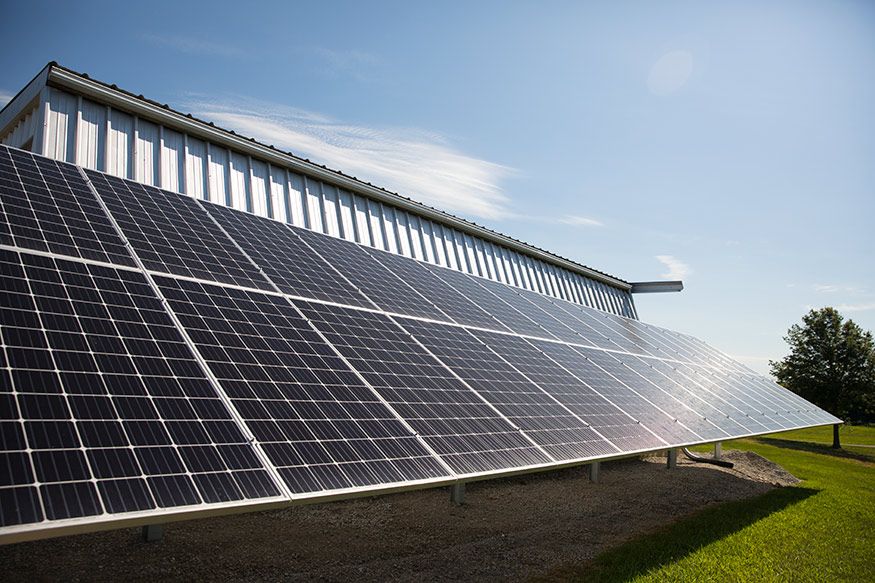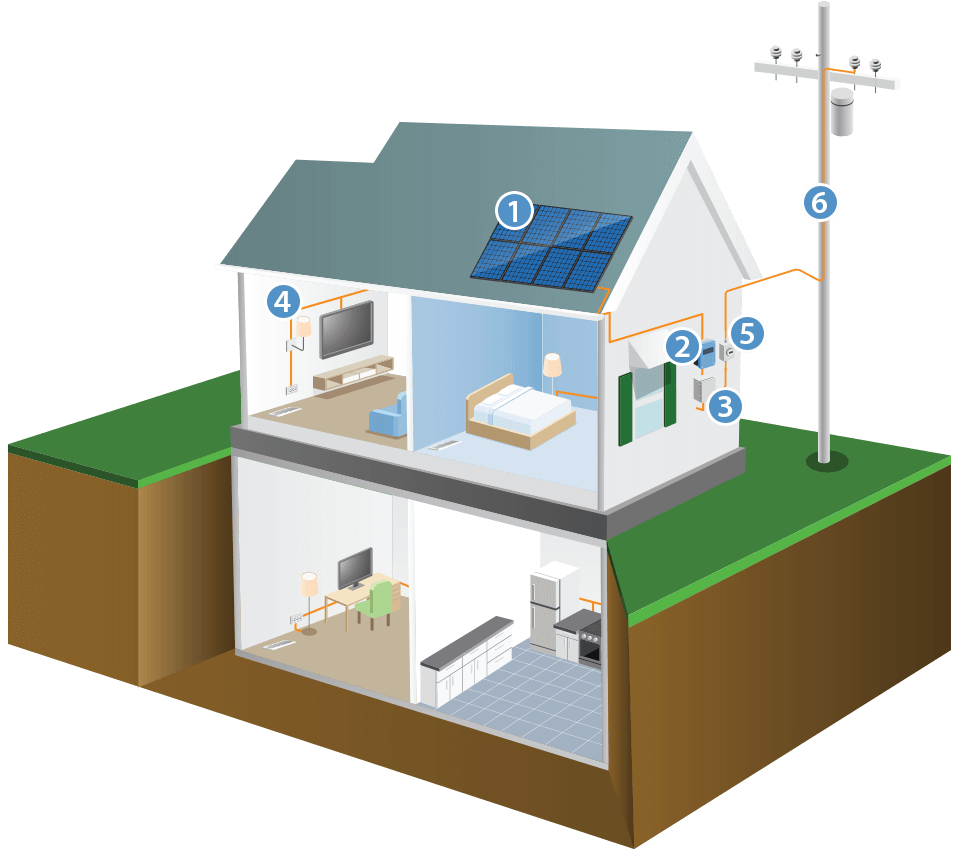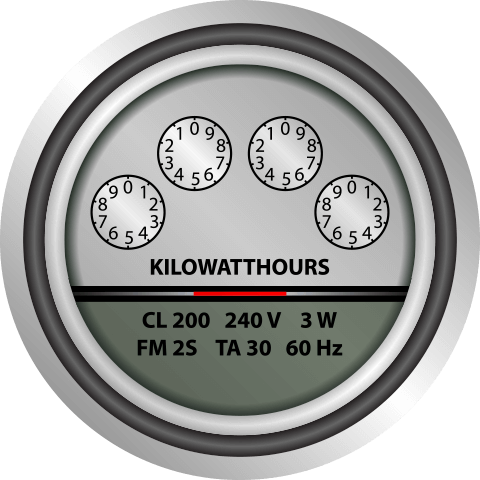Power Products
Solar Photovoltaic (PV) Basics

Measured in kilowatt-hours, or kWh, the electricity produced from each array will depend on the module count and power rating of the modules. The higher the count, the more energy is absorbed during peak sunlight hours and optimal operating temperatures. The array location and facing, tilt, and the amount of shade also factor in how much energy is produced. To maximize production, we suggest talking to a solar professional to ensure the highest quality design and performance.
Similar to geothermal, the lifespan of a solar PV array is, on average, 30 years plus, with low maintenance.
How Parts of a Solar System Work Together

 Solar Modules
Solar Modules
As sunlight hits the surface of the modules, the photons from the sun’s rays are collected by the solar cells on the modules and release electrons, which creates electric energy, or DC energy (direct current).
 Inverter
Inverter
The DC energy collected is converted to AC energy (alternating current) by the array inverter. AC energy is the type used to power homes and buildings.
 Breaker Panel
Breaker Panel
Once the AC energy is collected from the inverter, it is sent to the breaker panel to power the home or building. Excess energy will be sent back to the utility grid (see number 5 to learn more about excess energy).
 Home Electricity
Home Electricity
Whole-home or building electricity can be harnessed “free” from the sun to offset energy-users like your geothermal heat pump, electric vehicle charging station, or lights. It’s electricity customized for your needs!
 Net Metering
Net Metering
Once you’ve met the required energy needs for your house or building, the excess energy produced will be sent back to the utility grid, causing your meter to run backward (as long as your utility has a policy for this). Excess power is monitored and credited to your account through the net metering incentive process for qualified utility companies. This helps lower your monthly utility bills for even more savings.
 Grid Interconnection
Grid Interconnection
If you ever need additional electrical energy (more energy than your solar array has produced), the utility lines will help transfer the needed energy to the breaker panel. Or when there’s excess energy, it will be sent back to the electrical grid via the utility lines.
How Net Metering Works
Creating a sustainable, environmentally friendly lifestyle that doesn’t burn holes in your wallet each month can be done by incorporating a solar array into your home or building. Lowering or eliminating monthly power bills, creating awareness for how much energy is used, and transforming your home are only some of the numerous benefits of solar.
When the sun reaches its highest point, typically around mid-day, the solar array output reaches its peak. The energy generated for that day will be converted and used to power the home or building. If excess energy is created (more than what is needed), it will be sent back to the grid and used for your nighttime energy consumption, since the array has no output at night. This is called net metering and is offered by certain utility companies. Customers will get billed based on their “net” energy use. Simply put, net metering allows residential and commercial customers to have a unique ‘energy-storage’ system. You can use the energy produced, and the excess energy can be stored and used at a later time.





TETCO’s 4-Step Process to an Energy-Efficient Home

Step 1: Insulation Is Key
By investing in the best-performing insulation technology, an air-tight structure is created.

Step 2: Get Geothermal
Lower the structure’s energy demand and monthly utility costs by installing a geothermal heat pump. Proper insulation creates allows for a smaller sized-system.

Step 3: Go Solar
Since proper insulation and geothermal created a lower energy demand, fewer solar modules will be needed to offset some or all (excluding connection fees) of the monthly power bill.

Step 4: Energy Storage
If you want to be energy independent, taking step one through three will allow you to use an external energy storage option like batteries, which allows excess energy to stay on-site.
Create whole-home sustainability by investing in solar and geothermal. Combining two, time-tested technologies creates an environmentally friendly option that will prove their worth.
To learn more, download the infographic on geothermal + solar and our Guide to Residential Solar Tax Incentives.